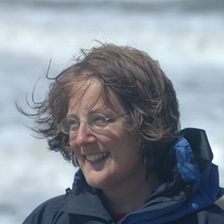 This
collection should come with a warning. Its word-charms get under your skin and wriggle it loose. Its rhyme-chimes sing you awake. The poet SusanRichardson
strides into her third collection by CinnamonPress,
abandoning rucksack-baggage, at ease with her own voice. In the
opening poem, 'Let my words be bright with animals', she announces
her song;
This
collection should come with a warning. Its word-charms get under your skin and wriggle it loose. Its rhyme-chimes sing you awake. The poet SusanRichardson
strides into her third collection by CinnamonPress,
abandoning rucksack-baggage, at ease with her own voice. In the
opening poem, 'Let my words be bright with animals', she announces
her song;
'Let my verbs be studded with
Glow Worms.
Let Painted Ladies flit from
each vowel I sound.'
Richardson's
eco-poetry is as subversive as it is playful. A tiger-woman hunts
'not just for prey
but for pungent signs/ that her kind has stopped declining.' I
caught the spirit of AngelaCarter
lurking in the undergrowth of her reworked fairytales; a
daughter-turned-deer in 'The White Doe' is undaunted:
'Though the man I was meant to
wed
turns hunter,
I will out-wood him.
For an un-life in the unlight
has taught me slinkness …'
At the same time, the bounce and
burble of its sound-patterning, the glitter of its word-coining,
reminded me of Gerald Manley Hopkins.
So her starlings insist on their collective pronoun;
'… though she'll try to un-us
she'll cuss our dizzy-dazzle
us-gloss of flight
… us loves to live thus
usly ...'
'This is my joyspace! This!
This! This!'
Others are more conflicted, like a
seal-woman unwillingly changed:
'I had to earn the sea's esteem
spurn the urge to scream
beneath its upturned ceiling.'
('Homophoca Vox Pop')
Richardson's metaphors typically
put you right inside the metamorphosis so you experience the sensuous
possibility of another skin;
'What my spine believed were
prickles of unease
were the birth-hurts of
feathers.'
(The Pen is Mightier')
'… and i look
down and omigod
my belly's covered
in scales
and
i'm like
wow Sri Lakshmi
what have you
done
here? … i'm
totally
cool
with it though ..'
(the
full moon)
As
in texting, sentence lose their capitals but the polyphony of voices
gets ever more fluid. They slip the boundaries of 'man-made'
grammars. Word-classes revolt and re-form; neologisms slither into
animal language – the 'rrrrrraaaaaw'
of the lion, the 'gubfobs
shrull glupper'
of seal-speak and best of all, the vowelled-sibilance of a merfolk
transcript complete with an extended 'translation';
Flosha plisha flof sleeshi
ull sosh hallisha soosh.
Blip floff mosh ussa lasha.'
('Sleesh Flosha')
I haven't even mentioned the
wonderful illustrations by Pat Gregory
which 'con-verse' with the poems. They match the closely-textured
nature poetry and catch the undertow of its mythologising. Richardson
is a 'Wales-based' poet and Welsh stories and place-names lace the
collection with a distinctive Celtic tang. Gregory captures this in
her twining spirals of animal-human forms, in prints that echo the
capitals of an illuminated manuscript and a cover as knotted as the
'what-animal?' riddles of the verse. The artwork heightens the
pleasure of the word-singing. Gregory also captures the rich vein of humour in the poems, as in the wry illustration to Zoomorphic' where the Insomnia Llama clasps a sleepless woman, clothed in 'zzzzzz' pyjamas, in an unshakeable embrace. But above all, these poems will leave
your skin
tingling and your synapses firing. You will be itching to slip into a
new pelt with a richer musk;
'When I tried it on I suddenly
believed
I could speak shrimp and brine.
It made me feel oceanic.
Made me as high as a spring
tide.'

